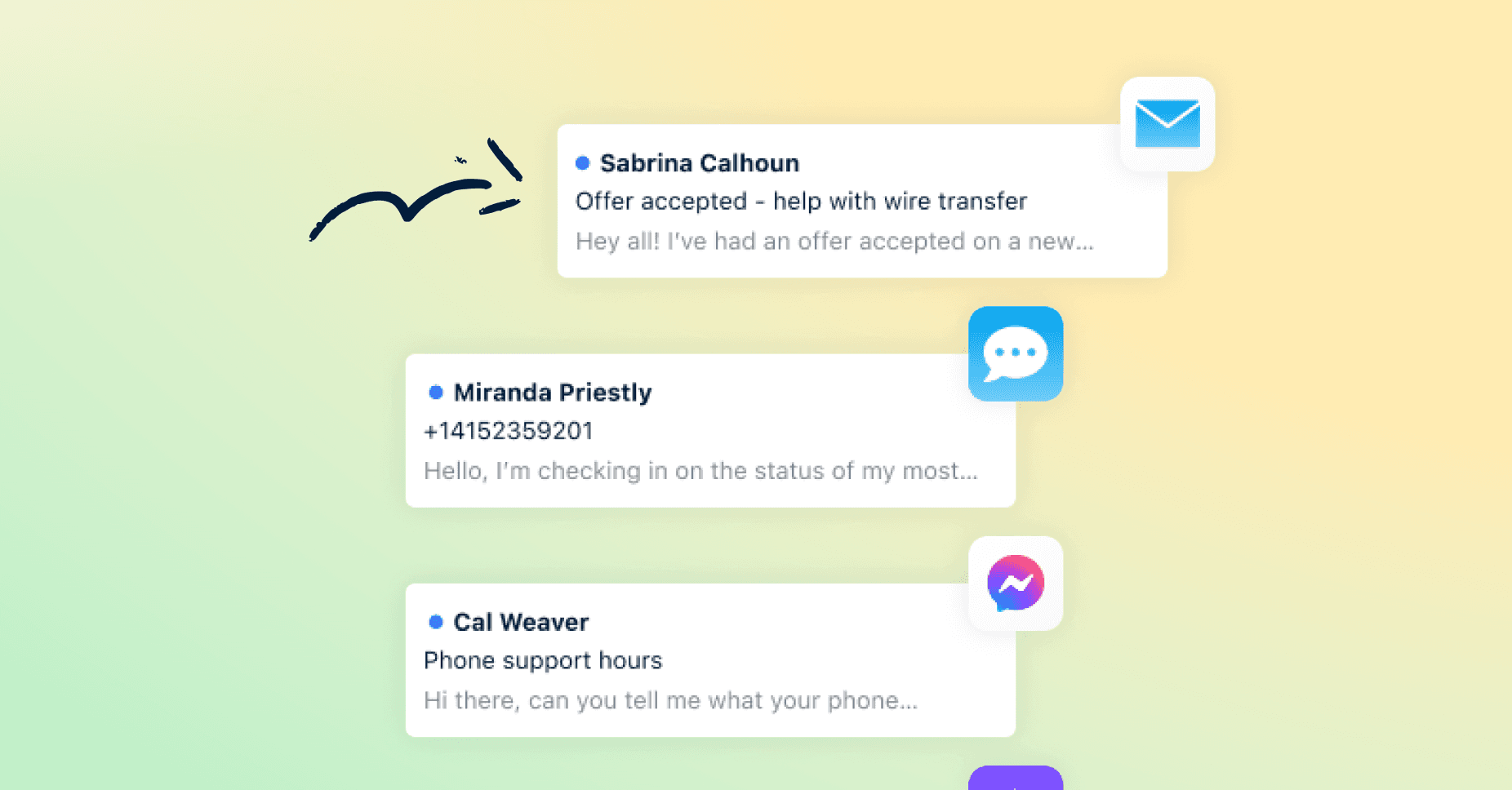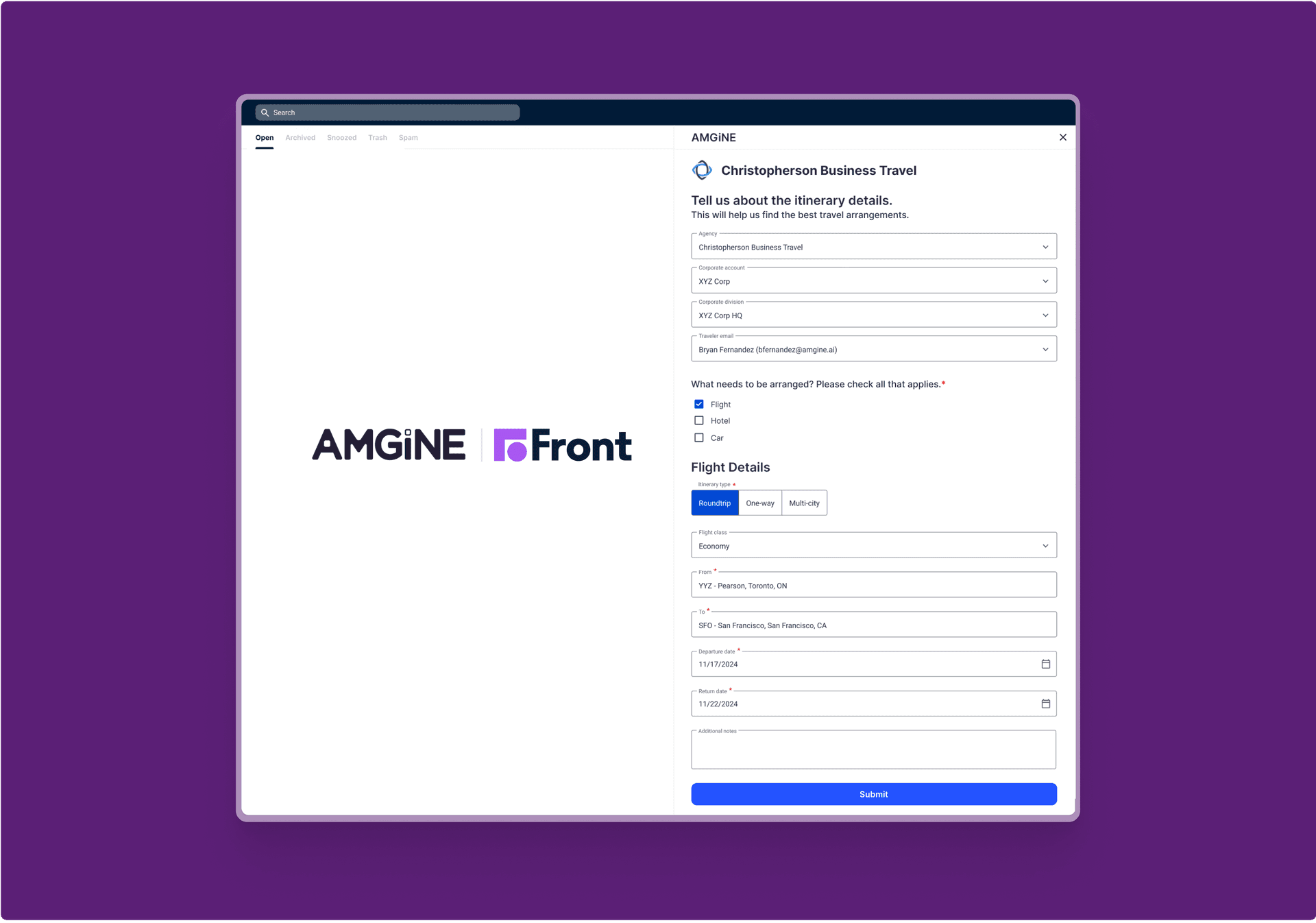In a perfect world, you could field customer questions and requests all on your own. But today’s support teams are under more pressure than ever. Customers want answers now, whether they’re messaging with a chatbot, tagging you on LinkedIn, or firing off an email.
To keep up with that kind of expectation, you’ll need some backup. That’s where customer service platforms come in. The right tool doesn’t just fire off fast replies. It helps you show up for your customers exactly when and where they need you.
What teams and channels do customer service platforms centralize?
Finding the right software for customer support starts with understanding what your business needs: What are your SOPs for servicing customers? Which teams benefit from working in a single platform? Which channels do your customers actually prefer?
Here are the key communication channels customer service platforms bring together, plus the teams that rely on them:
Phone (voice): Support teams managing high-touch or urgent issues benefit from real-time call routing, recording, and customer history to solve issues faster and keep customers happier.
Chat and messaging: Live agents and AI agents use this channel to manage multiple real-time conversations, guide customers to resolutions, and deflect repeat questions.
Social media messaging: Community and support teams can respond directly in the spots where customers post, reducing public escalations and improving brand trust.
Email: Whether it’s frontline support or the operations team following up, email gives breathing room without the pressure of an instant response. It also makes it easier to track ongoing conversations, loop in teammates, and templatize replies for speed and accuracy.
Community forums: CX and product teams can use forums like Reddit or Stack Overflow to monitor user sentiment, collect feedback, and foster peer-to-peer support.
Employee support: Internal help desks like IT, HR, and onboarding rely on similar workflows to serve employees efficiently — and those conversations deserve the same care and visibility as chats with customers.
Using a customer service management system: Benefits and main features
So what can the right system actually do for your team? Here’s how the best platforms drive real impact.
Key benefits
Enhance customer satisfaction
You can’t solve every issue at once. But with the right tools, you can make every customer feel like your top priority. A customer service management system helps your team respond quickly and personalize every interaction. Small moments of care add up to lasting impact and loyalty.
Reduce operational costs
Automation takes care of repetitive tasks like ticket routing, FAQs, and follow-ups, so your team can focus on what actually needs a human touch. That saves time and money, increasing efficiency without cutting corners.
Support agent wellbeing
AI may be tireless, but your human agents need a support system to get through the busy work day. With centralized tools and clear visibility, teams can collaborate easily, balance workloads, and avoid burnout. When your customer team feels supported, they bring that same energy to customer interactions too.
Access actionable insights
With built-in analytics and reporting, you can see what’s working, what’s not, and where to focus next. Insights help your team keep improving, one decision at a time.
Core features
Feature | What it does |
AI-powered tools | Automate ticket sorting, plus chat and email responses for common questions; help agents identify patterns in user responses |
Ticketing system | Creates tickets, efficiently labels them, and tracks their progress |
Messaging platform | Handles internal communication between agents, as well as between customers and agents |
Voice communications solution | Offers support to customers for complex issues in real time |
Workspace for agents | Maintains workflows and avoids overlapping work between agents |
Reporting tools | Track and measure service performance, speed, and satisfaction |
Integrations | Integrate with other customer-related platforms to update customer data for a personalized experience |
Data security tools | Store and protect sensitive customer data in your platform by encrypting and limiting access |
What are the best tools for customer service?
Here’s how seven of the best customer service software solutions stack up.
Front
Front is the only customer operations platform built for the high-stakes reality of B2B service. It connects every channel, workflow, and teammate so the whole system moves with precision. AI Autopilot handles what’s predictable. AI Copilot helps people handle what’s not. Together, they turn complex work into a competitive advantage.
Pros:
Unified workspace for individual inboxes, shared inboxes, and messaging, so resolving customer questions doesn’t require a switch between Gmail, your help desk, and Slack
AI learns from every signal to analyze, assist, and automate faster than anyone else.
Fast, familiar, frictionless. It feels like it’s been with your team all along.
Goes live in weeks, not quarters, starting fast, scaling easily, and never slowing you down
Cons:
Purpose-built for B2B and mid-market companies — may not be the best solution for small startups or Fortune 500 companies
Pricing scales with team size, but the collaboration gains often offset the cost
Zendesk
Zendesk is customer experience software that offers a unified dashboard for all your communication channels, as well as ticket routing, knowledge bases, and knowledge management tools. Zendesk’s detailed analytics dashboard also helps generate reports on customer satisfaction and agent performance.
Pros:
A veteran in the support space with strong multichannel capabilities
Customizable workflows and strong analytics
Extensive app marketplace and integrations
Cons:
Complex setup and steeper learning curve for new teams
Can get expensive once you add advanced features, apps, or multiple channels
Stagnant AI strategy and roadmap compared to forward-thinking challengers
Customization often requires apps or third-party help, which raises costs
Salesforce Service Cloud
Salesforce Service Cloud provides customer support agents with real-time, contextual insights and suggestions from AI agents. You can later route these insights to the sales pipeline and track the impact of your work.
Pros:
Enterprise-level customer service features with support for data insights
Automation, case routing, and AI recommendations — ideal for teams with dedicated admin support
Designed to scale with large or fast-growing organizations that can invest in setup and maintenance
Cons:
High total cost of ownership
Heavy reliance on the broader Salesforce ecosystem for full value
Requires time, expertise, and budget to get the most out of it
Can be overkill for smaller or mid-sized teams
Zoho Desk
Zoho Desk is a help desk software solution with an omnichannel dashboard where agents can track problems without any disruptions. The ticketing system automates categorizing tickets based on status, due date, and priority, and an AI-powered assistant helps conduct user sentiment analysis based on the language in responses.
Pros:
Budget-friendly without skimping on core features
Integrates well with other Zoho apps for all-in-one operations
Cons:
Interface isn’t as modern or intuitive as competitors’
Fewer advanced automation and reporting capabilities compared to more mature platforms
Occasional inconsistencies across Zoho apps when integrated into a larger stack
Freshdesk
Freshdesk is a customer service platform for managing and routing support tickets across channels. Its automation features can assist with organizing requests and suggesting replies, but the experience remains anchored in traditional ticketing workflows, often resulting in siloed conversations and fragmented context.
Pros:
An affordable entry point for teams looking for basic ticketing features
Omnichannel support, automation, and gamification to boost agent motivation
Generous free plan for small teams or startups
Cons:
Limited advanced reporting and customization
Slower performance with higher ticket volumes
Features like advanced automations and premium bots require paid upgrades
Support quality can vary, especially on free or low-cost plans
Help Scout
Help Scout is a client support software solution that focuses on communication. Its shared inbox automatically assigns conversations to agents, streamlining team collaboration with private internal notes and collision detection to avoid two agents working on the same issue.
Pros:
Focuses on conversational, email-based support that feels personal and authentic
Strong shared inbox tools with collision detection and internal notes
Integrates well with CRM software for customer service, live chatbots, and e-commerce
Cons:
Less suited for complex workflows or advanced automation needs
Limited omnichannel capabilities compared to other platforms
Fewer native enterprise tools (SLA, advanced reporting) compared with larger platforms
Smaller app ecosystem for niche integrations
HubSpot Service Hub
HubSpot’s Service Hub lets you search for customer history, information on the ticketing system, and service performance. The AI integration can help you automate responses based on scenarios and personalize interactions based on user segments.
Pros:
Fully integrated with HubSpot’s marketing and sales tools for uninterrupted data sharing
Leverages HubSpot’s workflow automation and reporting capabilities
Extensive app marketplace and integrations
Cons:
Premium features come at higher-tier pricing
Heavily dependent on the broader HubSpot ecosystem; limited flexibility for teams using other tools
Difficult to administer and maintain, similar to Salesforce
Stagnant AI strategy and roadmap compared to forward-thinking challengers
Make five-star customer service a reality with Front
Reed & Mackay, a global travel management company, built its reputation on exceptional service. But legacy tools made it hard to maintain speed and personalization at scale. By switching to Front, they unified all customer conversations in one shared workspace and empowered their team with AI-powered workflows and full context on every interaction.
The impact was immediate: Reed & Mackay raised customer satisfaction (CSAT) to 97% — well above the industry average — while giving their team the tools to stay fast, responsive, and consistent across every channel.
Front transforms support from a reactive task into a high-performing advantage, helping teams like Reed & Mackay deliver the kind of five-star service customers remember.
Ready to keep every customer conversation personal, no matter how fast you scale? Try Front for free today.
Written by Sara Shaughnessy
Originally Published: 25 November 2025











